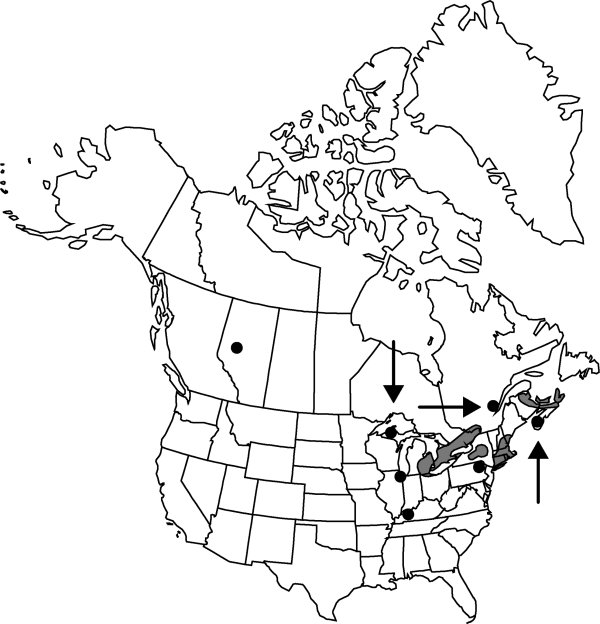Chenopodium bonus-henricus
Sp. Pl. 1: 218. 1753.
Stems erect to ascending, unbranched, 2.5–7.5 dm, somewhat viscid and farinose. Leaves nonaromatic; petiole 1–12 cm; blade triangular to broadly hastate, 4.5–10 × 3–9 cm, base truncate, cordate, or hastate, margins entire, apex acute (acuminate), adaxially sparsely farinose. Inflorescences: dense glomerules sessile on terminal and axillary spikes, spikes 5–19 cm; glomerules 3–5 mm diam., flowers developing at about same time; bracts absent. Flowers: perianth segments connate into 0.4–0.6 mm tube, lobes oblong or elliptic, 0.8–1.5 × 0.5–1.1 mm, apex obtuse, rounded or truncate, scarcely abaxially keeled throughout, glabrous, not covering fruit at maturity; stamens (4–)5; stigmas 2–4. Achenes obovoid; pericarp adherent, ± smooth. Seeds obovoid or rotund, 1.5–2 mm in diam. margins not rounded; seed coat black, rugose.
Phenology: Fruiting early summer–fall.
Habitat: Waste areas and cultivated ground
Elevation: 0-200 m
Distribution

Introduced; Alta., N.B., N.S., Ont., Que., Conn., Ill., Ky., Maine, Mass., Mich., N.J., N.Y., Pa., R.I., native to mountains of Europe.
Discussion
Chenopodium bonus-henricus is widely grown throughout the temperate regions, occasionally escaping.
Selected References
None.